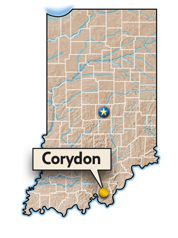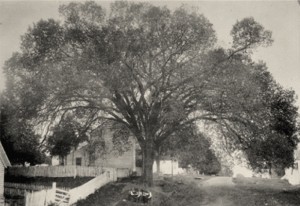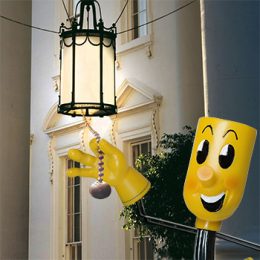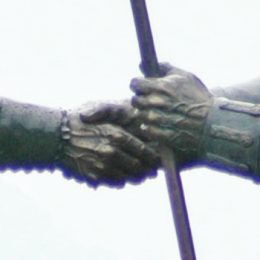The year 1816 has been called the “Year without a Summer,” as unseasonable cold was felt across North America and Europe. But in the Indiana Territory, where a new state’s constitution was being forged just north of the Ohio River, it was unseasonable heat that added yet another colorful chapter to our Hoosier history and lore.
The year 1816 often has been called the “Year without a Summer.” The late spring and summer of 1816 had a strange “dry fog” on many days throughout the Northern Hemisphere that brought wild temperature swings. Sometimes the temperature would drop from summertime highs of 95 F to almost freezing within hours. Severe frosts over several nights in a row recurred throughout the summer as far south as New Jersey and even Virginia. River ice was reported as far south as Pennsylvania that summer.
Believed to be caused by a massive volcanic eruption in the Dutch East Indies a year earlier that threw enough ash into the atmosphere to partially block the sun, the unseasonable cold destroyed multiple plantings of crops throughout the spring and summer and brought famine across North America and Europe. But in the Indiana Territory, where a state’s constitution was being forged that June, it was a different story. Temperatures and tempers ran hot.
 Corydon, located about 15 miles north of the Ohio River in Harrison County, had replaced Vincennes as the territorial capital in 1813. When criteria for statehood had been met by 1815 in the Indiana Territory, folks in the 13 existing counties petitioned the federal government for admission and elected delegates for a constitutional convention.
Corydon, located about 15 miles north of the Ohio River in Harrison County, had replaced Vincennes as the territorial capital in 1813. When criteria for statehood had been met by 1815 in the Indiana Territory, folks in the 13 existing counties petitioned the federal government for admission and elected delegates for a constitutional convention.
Beginning June 10, 1816, 43 delegates convened in Corydon to write Indiana’s constitution. The state’s capitol building, the stone structure that today is a state historical site, was under construction and apparently not ready for the convention. Instead, the delegates met in a partially finished structure used as a courthouse a block to the northwest of the capitol grounds.
While the delegates borrowed heavily from the constitutions of other states, a major argument arose over the issue of slavery. Some delegates wanted each community or county to decide whether to allow slavery. Others did not want slavery at all. Eventually, after heated debates, slavery would be banned in the new state. The document also mandated the funding of public schools — a first in the nation.
Because of cramped conditions inside the makeshift convention hall and the sweltering heat, the delegates began taking their discussions outside. According to folklore that grew up with the state, the delegates found refuge from the heat beneath a giant elm tree — down the hill near a creek. This tree — 50 feet tall with a spread of over 130 feet — certainly would have provided plenty of shade under which 43 men could have gathered. The convention concluded with the completed constitution June 29.

Electric cooperative mascot Willie Wiredhand says it took a lot of sweat and toil to hew our state from the frontier, but its constitution was “made in the shade!”
The tree became known as the “Constitution Elm” and stood as a symbol for the founding of Indiana and a unique conversation piece.
The Constitution Elm lived another 109 years before it became infected with Dutch elm disease that decimated elm trees across North America beginning in the 1920s. Despite attempts to save the Constitution Elm, it succumbed to the disease and died in 1925.
The tree’s branches were removed, and the trunk was preserved with coal tar and, in 1936, was surrounded by a monumental sandstone frame visitors can still check out on High Street. Recent restoration to the trunk returned the dead wood to a more natural appearance.
Fortunately, wood from the elm was saved. Woodworkers made gavels for all 92 Indiana courthouses from the timber, and, in 2000, some of the wood was used to create a secure environmentally controlled display case to exhibit state historical documents in the Statehouse rotunda in Indianapolis. When the General Assembly is in session, the original 1816 constitution is rotated in and displayed — back under the wood from whence it came.
Historians cite the cold summer of 1816 and the food shortages it created as one of the catalysts that sparked the westward expansion of the United States. After that year, Eastern folks began migrating more and more to places with better land and climates on the frontier — like the new state of Indiana.
Stay tuned each month as Willie presents more Indiana “Bicentennial Zingers.”





